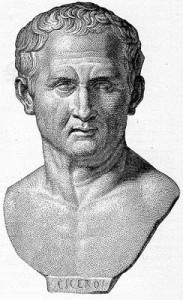This post was assembled on “Giving Tuesday,” November 28th, 2017.
At no time in human history has so much potentially useful information and such an abundance of astounding images and music been available to almost everybody for free or at minimal cost.
The hard part is cutting through the info noise to get to the worthwhile cultural signals.
The following links to books, articles, and videos have been sources of inspiration and practical help to me in being an artist.
I have organized the material into seven general categories for your convenience.
Dynamics of Economic, Technological, and Social Change
Creative Pinellas Podcast – Arts In: Bob Barancik
The Black Swan: The Impact of the Highly Improbable
Homo Deus: A Brief History of Tomorrow
Excerpted from Robot Proof: Higher Education in the Age of Artificial Intelligence
Pew Research Center (best social polling statistics)
Singularity Hub (Man/Machine nexus; excellent free e-newsletter)
“Hazards of Prophecy” by Arthur C. Clark
“Atlas” Robot doing back flips and super jumps
Dynamics of Personal Change
The Evolving Self: A Psychology for the Third Millennium
Be Happy & Let Go of Guilt
Art & Fear: Observations on the Perils and Rewards of Artmaking
Career Advice for Creatives
Think Like a Freak: The Authors of Freakonomics Offers to Retrain Your Brain
The 80/20 Principle: Achieving More with Less
The Drunkard’s Walk: How Randomness Rules Our Lives
The Tao of Abundance: Eight Ancient Principles for Abundant Living
Res Artis: Worldwide network of artist residencies
How should you manage your money? And keep it short.
Coping with Illness
Anatomy of an Illness: As Perceived by the Patient/Reflection on Healing and Regeneration
Healing & the Mind (companion book from PBS series)
Feeling Good: The New Mood Therapy
Depression, the secret we share (TEDtalk with Andrew Solomon)
Understanding Florida
Land of Sunshine, State of Dreams: A Social History of Modern Florida
Dream State (eight generations of eccentrics who made Florida what it is)
Inspiring Online Videos
The Life of Flowers Video – time lapse photography
NASA: Solar Eruption
Inspiring Online Music
Duet of the Flowers
https://www.youtube.com/watch?v=Vf42IP__ipw
Odetta: This Little Light of Mine
Shenandoah
Chopin: Complete Piano Nocturnes
Loving Vincent
9 Robot Animals Built From Nature’s Best-kept Secrets
In 2015 I posted a blog entry titled “St.Pete: Great Encore Artist City.”
The content dealt with key people, places, and insider insights that would be of practical use to creative boomers contemplating a relocation from up north to The Sunshine City.
Over the last 28 months, much has transpired — most of it for the good. Three highlights include:
The ongoing construction of The Museum of the American Arts and Crafts Movement
The ongoing construction of James Museum of Western and Wildlife Art
And the completion of the acoustic shell at the Mahaffey Theater for the Florida Orchestra
The two big questions clouding an otherwise blue sky are whether the thousands of new rental buildings and condos currently under construction, or just completed, will greatly diminish the laid-back charm of the city; and whether city government can competently oversee the design and management of the vital new sewage facilities.
But on balance, that what was good in the recent past remains good today. And St. Pete remains one of the best and most affordable places for creative boomers to both continue and expand their creative pursuits.

 A single white egg
A single white egg












